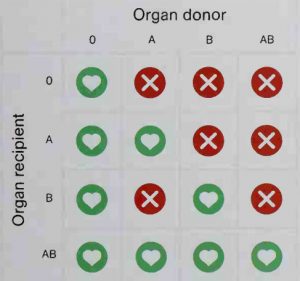Earth Science: Anatomy Human – Blood
Blood is a bodily fluid, red in color, which circulates in the blood vessels and carries out important functions within the body. These include oxygen transport, heat regulation, signal transmission, and defense against illness, among other tasks.
In humans, blood cells make up about 45 percent of the blood by volume. The rest consists of plasma-a watery solution that makes the blood fluid—in which various substances are dissolved, primarily proteins but also electrolytes, carbohydrates, fats, and hormones. There are three different types of blood cells: the red blood cells (erythrocytes), white blood cells (leukocytes), and blood platelets (thrombocytes).
Red blood cells contain the substance hemoglobin, which gives blood its color. The hemoglobin allows the blood to transport oxygen from the lungs to tissues throughout the body and return carbon dioxide from the tissues to the lungs.
Since red blood cells are flexible and can change their shape as needed, they can pass through even the smallest blood vessels. The job of the white blood cells is to identify and destroy harmful organisms. White blood cells can actively leave the bloodstream, for instance, in order to combat bacteria in bodily tissues and fight infections.
Blood platelets play a key role in blood clotting (hemostasis). When a blood vessel is damaged, the platelets are activated immediately. They help close the wound and limit blood loss.
BLOOD TYPES
An individual’s blood type, or blood group, is based on the characteristics of his or her red blood cells. Red blood cells can display specific structures, called antigens, on their surfaces Various systems are used to divide individuals into blood groups. The best-known is the ABO system, which distinguishes four basic blood types: A, B, AB, and O.
This information is especially vital for patients undergoing blood transfusions, since only blood from a donor with the same type as the recipient-except for type O, which is universal-can be used. Otherwise, the blood cells will clump together, and life-threatening complications can arise

BASICS
BLOOD VOLUME Adult human have some 4 -6 quarts or litter of blood, a total of 6 -8 % of their body weight Men often have about one liter more than women.
BLOOD LOSS The loss of I!) to 20% of blood volume-about one quart or liter—can be life threatening
For instance, in the United States, the majority of people have Type blood, whereas Type B is more common in some parts of Asia, and Type A in much of Europe
